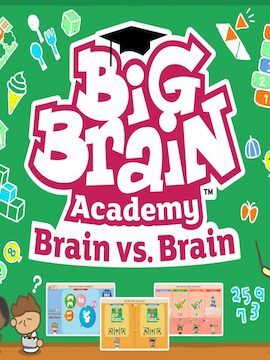
Brand
- M&S Collection 90.977
- Mascot 30.973
- Portwest 27.629
- Sandvik Coromant 27.358
- Routledge 23.737
- Fruit Of The Loom 23.201
- Rhodes + Scholes 19.901
- Blaklader 17.833
- MTP Products 17.627
- Gemini Interiors 16.686
- Maroxe 16.373
- EUROKRAFTpro 16.189
- Nobody's Child 15.789
- BOSS 13.245
- Slingsby 12.505
- Nike 12.178
- Moon Magic 11.807
- ECCO 11.004
- White Stuff 10.849
- Autograph 10.844
- Air Jordan 10.834
- Dams 10.212
- Lyle & Scott 10.014
- Life Essentials 9.535
- Russell 9.000
- Impulse 8.788
- KENZO KIDS 8.721
- Sid & Sam 8.065
- Carpe Diem Beds 7.910
- Pour Moi 7.852
- Style and Chic 7.764
- Merkel Designers 7.587
- Unbeatable Bargains 7.441
- Tyrell & Tyrell 7.384
- TopVue 7.294
- The Home Maker 7.216
- Monsoon 7.175
- Direct Imports 6.948
- All Things Good 6.932
- Discount Dealers 6.896
- Prestigious Textiles 6.895
- Wonders 6.871
- SHINEANDGLORY 6.869
- Millennium Furniture 6.862
- Casper Homes 6.848
- R and M Furniture 6.804
- Ergomat 6.672
- FatFace 6.598
- Merlin Deals 6.535
- Decor Base 6.343
- Brittle & Co 6.240
- Stanley 6.238
- Design Hut 6.103
- adidas 6.009
- Seasalt Cornwall 5.963
- Regatta 5.660
- CRC Press 5.645
- Kennedy 5.642
- Timberland 5.625
- Liverpool FC 5.604
- Sealey 5.532
- Vale 5.382
- ORN 5.345
- Crew Clothing 5.329
- Silent Gliss 5.308
- Charlotte Dunes 5.288
- SOSANDAR 5.247
- BILLIEBLUSH 5.213
- Callaway 5.196
- Finery London 5.131
- Haynes Manuals UK 5.131
- Outsunny 5.057
- Steam 4.996
- Co 4.984
- Savings Store 4.938
- Sergio Rossi 4.878
- Velux 4.791
- FAG 4.777
- Dunlop 4.611
- C&P 4.479
- Body by M&S 4.414
- Ping 4.393
- Goodmove 4.359
- Watco 4.307
- 3M 4.241
- DKNY 4.226
- FootJoy 4.199
- Salomon 4.196
- Under Armour 4.190
- Gildan 4.186
- B&C Collection 4.150
- Adidas 4.080
- Lighthouse 4.066
- TIMCO 4.019
- Fantasie 4.018
- Shire 4.009
- Live Unlimited London 3.968
- Ace & K 3.936
- Magee 1866 3.911
- YouGarden 3.885
Colour
- Black 183.977
- White 84.720
- Blue 58.212
- Grey 35.515
- Navy 33.373
- Green 31.263
- Red 29.248
- Brown 28.200
- Pink 25.751
- Noir 24.861
Size
- XL 38.849
- S 30.547
- M 29.522
- L 28.308
- 2XL 23.726
- 8 20.518
- Medium 18.860
- Large 18.612
- Small 18.118
- XS 17.427
Gender
Merchant
- Zoro UK 575.668
- Marks & Spencer UK 300.104
- Home Done 174.433
- Zoro UK Limited 70.963
- Glisshop uk 65.569
- Kids around 61.252
- Maroxe 43.970
- Alensa.co.uk 38.321
- AndLight.co.uk 37.983
- Kick Game 36.691
- Workwear Supermarket 35.865
- Routledge 32.763
- MyTrendyPhone.co.uk 30.926
- Your Stylish Home 23.518
- K4G.COM 21.761
- Golf Gear Direct 17.238
- Click Golf 16.945
- QD Stores 16.050
- Belveto 15.481
- Suit Direct 14.213
- Nobody's Child - Cabiro 13.287
- Acorn Fire & Security 13.077
- Plusshop UK [OLD] 12.145
- Moon Magic 11.807
- gb.ecco.com 11.632
- Lime Lace 11.496
- LuisaViaRoma.com 11.240
- Lyle & Scott 9.736
- Seal Medical 9.541
- My-Deco-Shop 9.336
- Orthopeca UK 9.294
- Selfmade.com 8.594
- Ann's Cottage 8.269
- carpediembeds.co.uk 7.910
- Perfect Little Thing 7.897
- Cowling & Wilcox 7.592
- Wrong Weather 7.430
- Building Plastics Online 7.073
- Wonders - Official Site 6.871
- shineandglory.com 6.869
- Cherry Lane 6.762
- Erysta 6.527
- Argento 6.461
- Grace & Co Jewellery 6.214
- uk.plusshop.com 6.064
- Haynes.com UK 5.937
- Mobility Smart 5.818
- Liverpool FC 5.610
- Craigmore UK 5.474
- Sergio Rossi UK 4.878
Price (EUR)
- <5 98.198
- 5 - 10 91.636
- 10 - 20 181.156
- 20 - 50 478.520
- 50 - 100 409.165
- 100 - 200 308.492
- 200 - 500 243.449
- >500 240.456
























